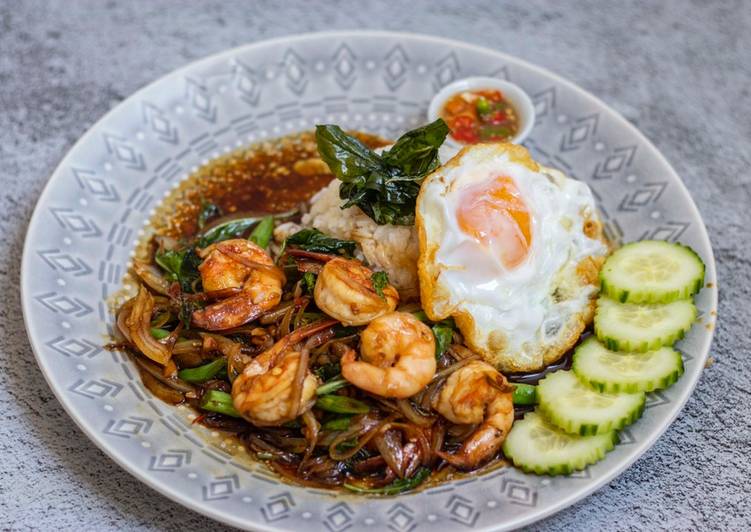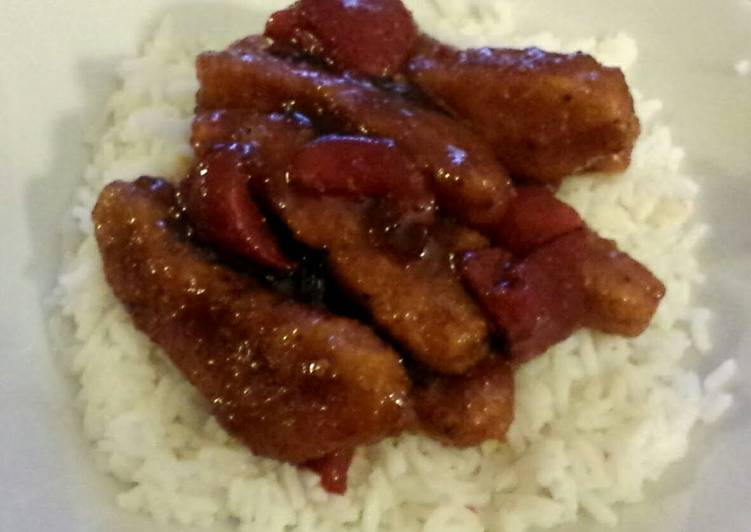
Hey everyone, I hope you are having an amazing day today. Today, I’m gonna show you how to prepare a distinctive dish, hayashi rice (hashed beef stew on rice) for adults. It is one of my favorites food recipes. For mine, I will make it a bit unique. This is gonna smell and look delicious.
Hayashi Rice is a popular Western-style stew made with tender beef, onions, mushrooms in a demi-glace sauce. This hearty and delicious stew is served As an Amazon Associate I earn from qualifying purchases. Hayashi Rice, or sometimes called Hashed Beef, is a popular Western-style stew made.
Hayashi Rice (Hashed Beef Stew on Rice) for Adults is one of the most popular of current trending meals in the world. It’s enjoyed by millions every day. It is easy, it’s fast, it tastes yummy. They’re fine and they look wonderful. Hayashi Rice (Hashed Beef Stew on Rice) for Adults is something that I have loved my entire life.
To begin with this recipe, we have to first prepare a few ingredients. You can cook hayashi rice (hashed beef stew on rice) for adults using 11 ingredients and 9 steps. Here is how you cook that.
The ingredients needed to make Hayashi Rice (Hashed Beef Stew on Rice) for Adults:
- Take 300 grams Thinly sliced beef or offcuts
- Prepare 2 Onions
- Get 200 grams Button mushrooms (or shimeji mushrooms etc.)
- Take 1 can Canned demiglace sauce
- Get 100 ml Red wine (or tomato juice)
- Get 400 ml Water
- Prepare 2 tbsp Ketchup
- Make ready 1 tbsp Flour
- Take 1 to 2 leaves Bay leaves
- Take 1 Salt and pepper
- Take 1 Oil
I think the origins are a hashed beef stew. I can see influences from beef bourgignon, stroganoff and various British stews in there. Hayashi rice or hashed beef rice is a Japanese dish consisting of a beef stew with a demi-glace base that is poured over steamed rice. However, other people claim that it comes from the mispronunciation of the English phrase hashed beef.
Steps to make Hayashi Rice (Hashed Beef Stew on Rice) for Adults:
- Slice the onions thinly. It doesn't have to be very thin. Cut each mushroom into about 5-6 slices.
- Season the beef with salt and pepper and dust with flour.
- Heat a pan, add oil and stir fry the onions. When the oil has coated all the onion slices, add the mushrooms and stir fry until everything has wilted. Transfer to a pot.
- Add more oil to the same pan and stir fry the beef. When the beef is browned, add the red wine and simmer rapidly over high heat until the liquid in the pan has reduced to 1/3 to evaporate the alcohol.
- Add the beef to the pot with the onions and mushrooms. Add water and the bay leaves, and simmer over medium heat for 5 minutes.
- Add the ketchup and mix. Add the demi-glace sauce, and give it a stir.
- Simmer over low heat for about 10 minutes… and adjust with salt and pepper to finish.
- If you're using tomato juice instead of wine, you can use half the amount of ketchup. I used a ton of mushrooms here; 100 g is fine normally.
- If the onions you have are big, just one should be ok.
Hayashi Rice (also called Hashed Beef) is a very popular Western-style rice dish in Japan. You can use the mix (roux) to save time, but in this video I will. Savory, tangy and sweet, Hayashi Rice is made with caramelized onions and cheap cuts of beef simmered in red wine and tomato paste until the Finished with sauteed mushrooms and served with hot rice, Hayashi rice is a classic Japanese comfort food. So how did this Western-style stew end up. • Hayashi Rice is Japanese beef stew poured over Steamed Rice. Hayashi sauce has distinct flavors of demi-glace brown sauce and red wine.
So that is going to wrap it up for this special food hayashi rice (hashed beef stew on rice) for adults recipe. Thanks so much for reading. I’m sure you can make this at home. There’s gonna be more interesting food in home recipes coming up. Remember to bookmark this page in your browser, and share it to your loved ones, friends and colleague. Thank you for reading. Go on get cooking!


